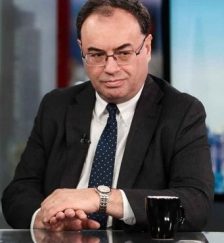 Strong conflict can be observed in the prediction made by Dixit Johsi, who thinks that eliminating the use of LIBOR from the global financial system may present a Herculean task that could be “bigger than Brexit”, and the view espoused by FCA’s boss Andrew Bailey this July in Interest rate benchmark reform: transition to a world without LIBOR who is adamant that the use of the discredited rate must end by 2021. In an earlier speech on the future of LIBOR last July, Bailey stressed the need to transition away from LIBOR and the importance of doing so has not changed. However, Johsi, who is the group treasurer of Deutsche Bank and is also a board member of the International Swaps and Derivatives Association, is of the view that ending the use of LIBOR is a unenviable “mammoth task” which is “bigger than Brexit” on the overall scale of things. In his speech Bailey reiterated the notorious status that LIBOR had attained after the global financial crisis (GFC) prior to which no one knew of its significance in the global marketplace. “Before then it was largely taken for granted, part of the financial landscape,” it how Bailey put it while stressing that the FCA has regulated LIBOR since April 2013 and that significant improvements have been made in its submission and administration. He said that the reforms of recent years had ensured that no further illegality took place but it was equally Bailey’s position that LIBOR must be terminated in its present form because the absence of active underlying markets raises a serious question about the sustainability of the LIBOR benchmarks that are based upon these markets.
Strong conflict can be observed in the prediction made by Dixit Johsi, who thinks that eliminating the use of LIBOR from the global financial system may present a Herculean task that could be “bigger than Brexit”, and the view espoused by FCA’s boss Andrew Bailey this July in Interest rate benchmark reform: transition to a world without LIBOR who is adamant that the use of the discredited rate must end by 2021. In an earlier speech on the future of LIBOR last July, Bailey stressed the need to transition away from LIBOR and the importance of doing so has not changed. However, Johsi, who is the group treasurer of Deutsche Bank and is also a board member of the International Swaps and Derivatives Association, is of the view that ending the use of LIBOR is a unenviable “mammoth task” which is “bigger than Brexit” on the overall scale of things. In his speech Bailey reiterated the notorious status that LIBOR had attained after the global financial crisis (GFC) prior to which no one knew of its significance in the global marketplace. “Before then it was largely taken for granted, part of the financial landscape,” it how Bailey put it while stressing that the FCA has regulated LIBOR since April 2013 and that significant improvements have been made in its submission and administration. He said that the reforms of recent years had ensured that no further illegality took place but it was equally Bailey’s position that LIBOR must be terminated in its present form because the absence of active underlying markets raises a serious question about the sustainability of the LIBOR benchmarks that are based upon these markets.
But since “LIBOR is a public good” regulators were eager to protect the the interests of all involved by sustaining the current arrangements until such time as alternatives are available and transition arrangements are sufficiently well advanced. A proxy LIBOR was discussed. Yet despite the need for a frictionless transition, Bailey is now saying that the time has come to put an end to the use of LIBOR and he therefore stressed that firms should not see phasing out LIBOR as a “black swan” event or a measure of last resort because it is not a “remote probability” and the benchmark’s termination is inevitable. He is pleased with the efforts made to change things thus far but he is not happy about the pace of the transition. The FCA is clear that ensuring that the transition from LIBOR to alternative interest rate benchmarks is orderly will contribute to financial stability and that “misplaced confidence in LIBOR’s survival will do the opposite, by discouraging transition.” Alternatives to LIBOR in the form of SOFR, SONIA, SARON and TONA are already operating globally. The Bank of England has started to publish a reformed and strengthened SONIA. Bailey informed us that it is now supported by an average of 370 transactions per day, compared with 80 before the reform.
Indeed, LIBOR could not match SONIA’s robustness even if the LIBOR panels included all banks in the market. As Bailey neatly explained:
SONIA, unlike LIBOR, does not use, and has no reliance on submissions based on expert judgement.
In setting out the case, or the need, to ditch LIBOR (which intends to measure the rate at which banks could borrow funds in the wholesale markets), the FCA boss noted that there are a number of reasons why LIBOR has become a problem. First, changes in the financial markets mean LIBOR has not been able to keep abreast with that change. The international interbank market has dwindled substantially and bank funding has switched away from the interbank market.
Second, the longer-term rationale for stopping LIBOR is that the eurocurrency markets no longer exist as a distinct entity. Importantly, euromarkets lived at a time when it was assumed that they were separate from domestic financial markets. Domestic financial markets were where domestic monetary policy was set, central banks operated, and were the domain of government bond markets. Thus risk-free rates rooted in the credit standing and policy institutions of the domestic state, were a feature of domestic financial markets and not the euromarkets. LIBOR was not a risk-free rate. Instead, it became a proxy for risk-free rates plus a measure of bank risk. One problem was that LIBOR came to be used to price much of the interest rate derivatives market, even as that derivatives market expanded far beyond hedges for the euromarkets. Bailey said that:
Logically a risk-free rate should have been used. I say this because an important reason for reform is to correct this situation.
Third, because banks are not presently lending to each other much on an unsecured basis, and the market is not returning, LIBOR is measuring the rate at which banks are not borrowing from one another. The system relies on the so-called expert judgement of the panel banks and Bailey opined that:
It is esoteric to say the least to ask and answer the question, were I to borrow, which I am not doing, what might the interest rate be? But, more fundamentally, what is such a rate representative of? And that is critical because to continue in the now regulated world of benchmarks, LIBOR has to be representative. I struggle to see the case for this judgement.
Fourth, the problem is that since the system for quoting rates and generating LIBOR is weak, vulnerability to misconduct is much greater. Bailey does not believe there is misconduct today but is concerned that “the system is more vulnerable to it” which means that the case for replacing LIBOR is strong. “A LIBOR limping on with fewer and fewer panel banks is an unattractive prospect,” on the other hand is not in the interests of the market and those who participate in it.
In the reform arena, Bailey thinks that “across all the LIBOR currencies, important and encouraging progress has been made” and numerous new rates have also entered the field. On the subject of how transition to a world without LIBOR can be made, he opined that a fallback was in order, or “a ‘seat belt’ in case of a crash when LIBOR reaches the end of the road.” As he expanded on his thoughts further:
But fall backs are not designed as, and should not be relied upon, as the primary mechanism for transition. The wise driver steers a course to avoid a crash rather than relying on a seatbelt. That means moving to contracts which do not rely on LIBOR and will not switch reference rates at an unpredictable time.
The smoothest and best means for this transition is to start moving away from LIBOR in new contracts. The signs of growing liquidity in SONIA markets, and the publication and growth of markets in SOFR and SARON mean real alternatives are available.
It will also be important to look for ways of reducing exposure to LIBOR in legacy contracts, where practicable. This might be through multilateral compression and conversion exercises in derivative markets, or when loan contracts come up for renewal, renegotiation or roll-over, taking the opportunity to move from LIBOR to alternative benchmarks.
As for legacy contracts, pointing out that some people would like LIBOR to remain, Bailey said that he would no rely on creating a “synthetic” LIBOR – not reliant on bank submissions – to assist with the legacy issue. Overall, synthetic or proxy LIBOR is “a lifebuoy for legacy rather than a long-term future for LIBOR”. There are “formidable difficulties” in pursuing the proxy option and he concluded that:
The absence of ways to remedy the current underlying weakness in LIBOR – the lack of transactions, the unattractive prospect of LIBOR limping on with fewer panel banks, and the significant problems associated with a synthetic LIBOR, all lead to the same conclusion. The best option is actively to transition to alternative benchmarks. The most effective way to avoid LIBOR-related risk is not to write LIBOR-referencing business.
Despite the warnings given by Dixit Johsi about the complications of eradicating LIBOR use altogether, Bailey is very clear that FCA supervised firms will need to be able to show to FCA supervisors and their PRA counterparts that plans are in place to mitigate the risks, and to reduce dependencies on LIBOR.
Indeed, in a parallel statement complementing Bailey’s arguments, the Chairman of the US Commodities and Futures Trading Commission, Christopher Giancarlo also made it very clear that:
The discontinuation of LIBOR is not a possibility. It is a certainty. We must anticipate it, we must accommodate it and we must adapt to it.
Making sure that LIBOR and other such benchmarks are not readily susceptible to manipulation is a key part of the ongoing work at the national and international levels and that is why enforcement agencies and regulators are keen to see off the transition from LIBOR to SOFR and the other risk-free rates.








Leave a comment